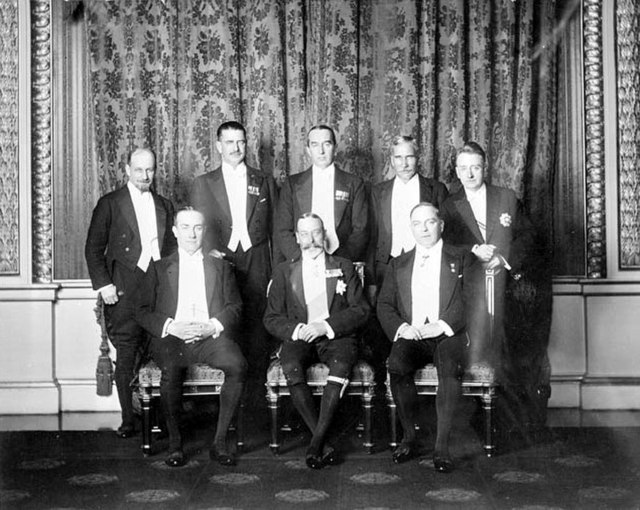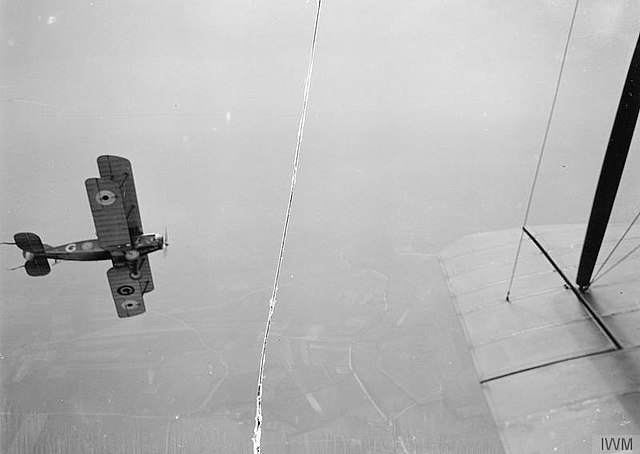In the history of the 20th century, the interwar period lasted from 11 November 1918 to 1 September 1939 – from the end of World War I (WWI) to the beginning of World War II (WWII). It was relatively short, yet featured many social, political, military, and economic changes throughout the world. Petroleum-based energy production and associated mechanisation led to the prosperous Roaring Twenties, a time of social and economic mobility for the middle class. Automobiles, electric lighting, radio, and more became common among populations in the first world. The era's indulgences were followed by the Great Depression, an unprecedented worldwide economic downturn that severely damaged many of the world's largest economies.
Actors Douglas Fairbanks and Mary Pickford in 1920
Unemployed men outside a soup kitchen opened by Chicago gangster Al Capone during the Depression, 1931
Cheering crowds greet Adolf Hitler and Benito Mussolini in Munich, 1938
George V with the British and Dominion prime ministers at the 1926 Imperial Conference
World War I or the First World War was a global conflict between two coalitions: the Allies and the Central Powers. Fighting took place throughout Europe, the Middle East, Africa, the Pacific, and parts of Asia. One of the deadliest wars in history, it resulted in an estimated 9 million soldiers dead and 23 million wounded, plus up to 8 million civilian deaths from numerous causes including genocide. The movement of large numbers of troops and civilians during the war was a major factor in spreading the 1918 Spanish flu pandemic.
Image: Bataille de Verdun 1916
Image: The Royal Flying Corps on the Western Front, 1914 1918 Q12059
Image: Przemysl Fortress Bain LOC 19648
Image: Arab Camel Corps








